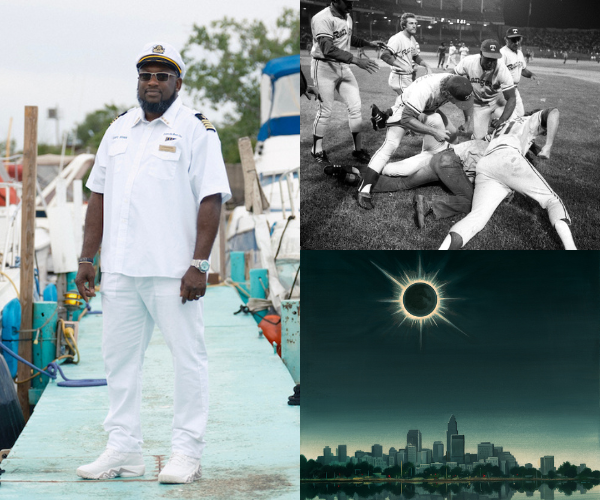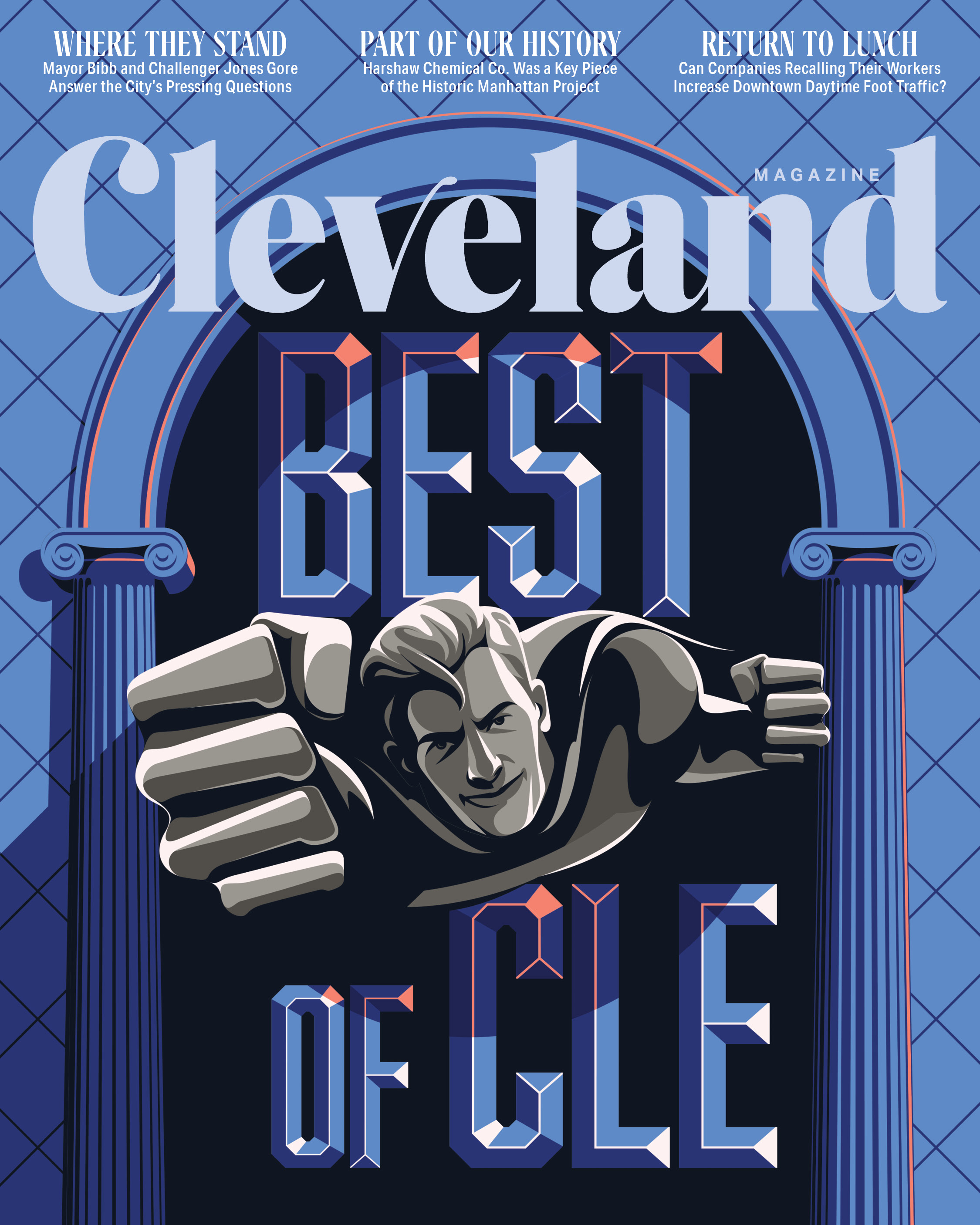My Suburban Conversion
by Colleen Smitek | May. 24, 2007 | 4:00 AM
At the time, I was five months pregnant. We moved in on Halloween. That morning, for the last time, I took the elevator down to the lobby of our building and ate breakfast at the little cafe. That evening, I sat on our stoop at the end of our new cul-de-sac and passed out bags and bags of candy. There were so many little girls. Every one dressed like a princess.
Sure, it was sweet. But the whole thing made me kind of nervous. Because I was a critic, too.
When I was a teenager living in Rocky River, my mom and I rarely went to the mall. But there was one summer we went to Tremont nearly every day to walk through the park and visit our favorite patisserie. In college, I read Jane Jacobs’ “The Death and Life of Great American Cities” and became convinced that, if I couldn’t live in New York or Chicago, I could at least live in an older neighborhood where life wouldn’t be totally dependent on cars. Vibrant communities, according to Jacobs, are created by mixed uses, short blocks, density and lots of older buildings. My new development didn’t really meet any of those requirements.
So how did I end up in Avon? After my husband and I got married, we each had a list of acceptable places to live with kids. I preferred older neighborhoods and homes; he preferred newer. He was willing to compromise and live in the Beachcliff neighborhood of Rocky River. I imagined myself living in a pretty old Tudor, pushing a stroller to the grocery store or to a coffee shop where my baby and I would happily hang out.
So we hired real estate agents (yes, more than one), drove Beachcliff’s winding streets looking for open-house addresses until we were dizzy, trying to imagine how much money it would take to transform houses already priced at way more than we wanted to pay into something we’d want to live in.
And that’s pretty much how we landed in Avon, the city where my husband grew up playing in the woods, trapping muskrats and skating on frozen ponds.
Like I said, I was nervous at first. I regarded my neighbors a bit curiously. They all seemed so content. Was this always your dream, I wondered? Because it was never mine.
Before living downtown, I lived in Lakewood, a few steps from a handful of bars where everyone I knew hung out. Before that, I’d taught English for a year in a small Austrian village where I either walked, rode my bike or took the train everywhere I went. All three places had one thing in common: I could go for a walk, never knowing what I might discover.
Our new subdivision, as nice as it was, seemed boring and predictable. Even stifling. Hundreds of new homes, all with brick fronts and siding in various shades of white, cream and brown. Lots of nice, middle-class people. People a lot like me. Every walk was the same.
It’s been almost four years since we moved in. Our oldest daughter is 3. She plans on being a princess this Halloween. We have another baby, too.
When I imagine living someplace else, I don’t think as much as I used to about what I could gain. I think about what my kids would lose.
Our cul-de-sac is the center of their universe. On the first stretch of nice days this spring, every child nearby flocked to our street. There were jump ropes and tennis rackets, bubbles and sidewalk chalk. Kids were swinging and sliding, riding bikes, trikes and scooters. My daughter’s best neighbor friend, a 3-year-old boy, insisted on pouring lemonade for everyone. His father brought some wine out for the adults. The toddlers threw stones down the sewer grate. The babies sat on grass for the first time. The preteen girls practiced their in-line skating. A 5-year-old girl with pigtails paused, looked up and marveled: “Every night is fun now.”
It’s like that all summer.
My childhood was much the same. I lived in West Park until I was 7, on a quiet brick street that got loud only when the kids were out. We played tag until dusk — and then some. The playsets were metal and bubble-making didn’t require batteries, but everything else was the same. My parents, who grew up on the near West Side, moved to West Park because they thought it would be a great place to raise a family. It was.
I have two friends who live in that same part of Cleveland now and, while it’s still a great place to be, it’s not stocked with young kids like it was in my day — at least not on their block.
When I contemplated writing this essay, I sent out an e-mail to all my neighborhood friends, asking for their thoughts on life in the suburbs. Two responses, in particular, struck me.
One was from my 40-year-old neighbor, a mother of three girls. “Living in Avon is ideal for me now, but it probably wasn’t always,” she wrote. “I think 10 or more years ago, it was more important to me to be around the fast pace of the city, walkable restaurants/shops, and the overall quaintness that some of the closer suburbs have. However, as I get older, the peace, security, friendliness and familiarity of Avon is more important to me. I guess everyone needs to weigh these things to find the place that seems most like home to them.”
She stated the situation so clearly. It’s ridiculous, I realized, to lament that I can’t walk to a wine bar. More important, right now, is that we can walk to the pool and the playground.
Another woman, a mother with one toddler and one on the way, remarked that she moved here four years ago because she knew it would be the best place to raise children. She’s 26 years old. That means she was thinking that way, thinking about her unborn children’s best interests, when she was only 22.
I wasn’t enlightened or sophisticated. I was selfish. If I’d had my way, my 3-year-old would be hanging out at a coffee shop with me instead of playing on the cul-de-sac with her dozens of friends. Such fun.
When we lived downtown, I walked to work during the week and biked along the lake to Bratenahl on the weekends. On one ride, I cut down Martin Luther King Jr. Drive and came back home down Euclid Avenue. My bike now has a baby seat on the back, but whether or not I had a child with me, I wouldn’t take that same ride anymore. This isn’t the time in my life for that kind of fun.
It’s not only the kids who benefit from our new life. My friend in West Park never turns down an invitation to anything, yet she knows no other mothers in her neighborhood. When I had my second daughter last summer, I couldn’t go outside without somebody handing me a baby gift. People brought meals to my house every day. Three other neighbors had babies within a few weeks of me — one on the same day, at the same hospital. I felt our joy was multiplied because it was shared.
Trending
-
1
-
2
-
3
-
4
-
5










